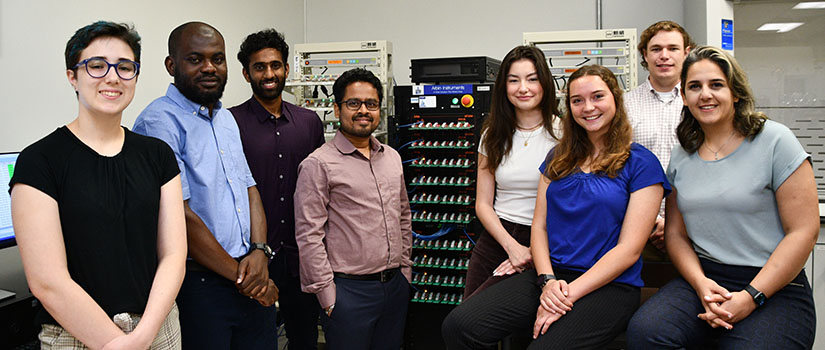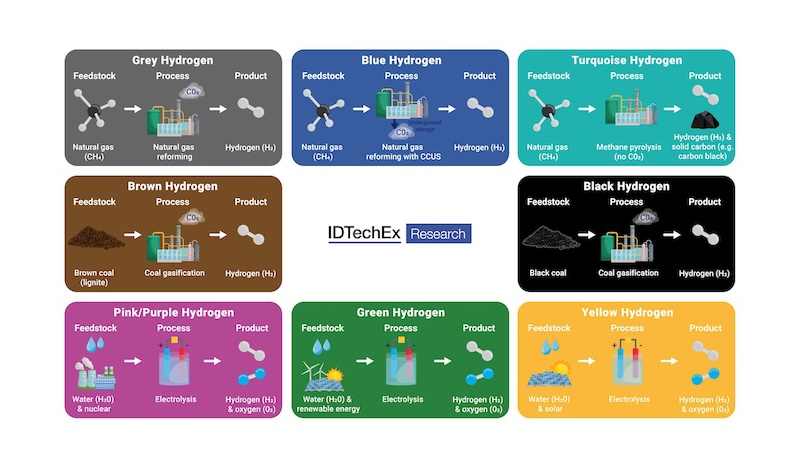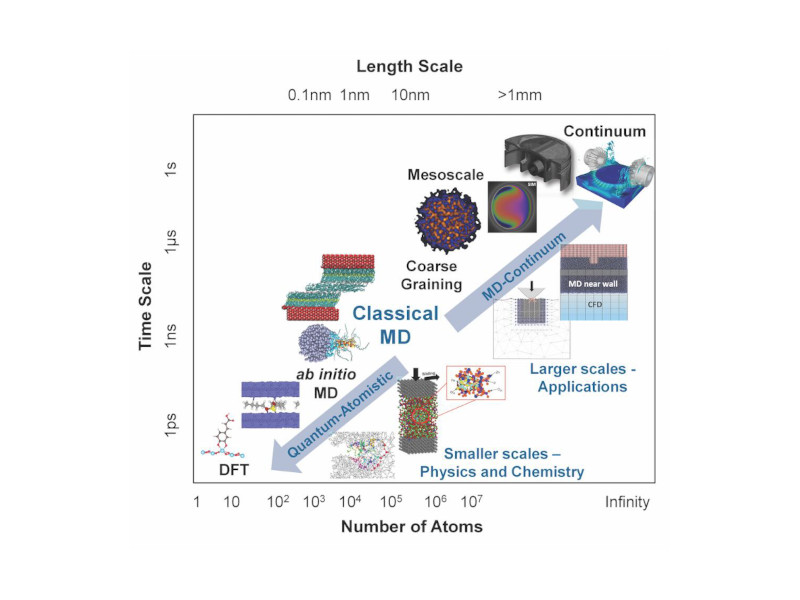EDITOR'S NOTE: This column is the final one in a series of columns based on the book, Future Capable Company: What Manufacturing Leaders Need To Do Today To Succeed Tomorrow, by Dr. Tompkins. These excerpts are provided through special arrangement with the publisher, Tompkins Press. Copyright © 2001 Tompkins Press.
In 1988, Dr. Tompkins wrote Winning Manufacturing, a book that remains one of the top five best-selling manufacturing books of all time. Future Capable Company expands on that book and brings together the author’s proven requirements for manufacturing success.
With the pace of change and the rate of innovation, what is a great process today will be suspect in a few months and obsolete shortly thereafter. The Future Capable Company must be aware of this and continually evaluate, analyze, and improve its processes.
To many, success is the ultimate goal. Unfortunately, success is rarely final. The natural order of life is peak-to-valley-to-peak-to-valley, and so on.
Through my experience at the top of peaks and at the bottom of valleys, I have determined the following four evolutions of a company:
Fail/fail
Fail/succeed
Succeed/fail
Succeed/succeed
Fail/fail is usually a vicious cycle that keeps destroying confidence until the ultimate failure occurs. What puts companies in a fail/fail cycle? They do not learn from their mistakes. As the saying goes, “Insanity is doing the same thing over and over and expecting different results.” There are many companies like this. You do not hear much about them because they never succeed. Or you hear that someone has bought them out before they went anywhere. Such companies quickly enter the fail/fail cycle.
Fail/succeed is the pattern of learning from mistakes to overcome setbacks. An example is a company whose CEO, after suffering a few failures, examines those failures, sees the good in them and recognizes the bad, and then begins working with management teams to eliminate the bad. Those who view failure as a challenge can turn adversity into the motivation to succeed.
Succeed/fail is the most common progression for many companies. The brief history of several B2C dot-coms is a good example of succeed/fail. After beginning with a surge of entrepreneurial energy, grabbing a lot of initial attention, making some big sales, and offering the latest e-commerce technology, many of them are gone after only a few years. There are many brick-and-mortars that follow the same pattern, though—large, easily recognized companies from almost every industry.
Succeed/succeed is the ultimate evolution. Companies that learn the formula for succeed/succeed to take the lead and hold on to it. They play to win instead of trying to avoid losing. They are Future Capable Companies. The key is continuous improvement. Companies that practice continuous improvement will put themselves in the succeed/succeed cycle.
The cornerstone of continuous improvement is collaboration through teamwork and partnerships.
Teamwork and Partnership
To practice continuous improvement, an organization must understand collaboration and cooperation—with suppliers, within organizations, and with customers. Within the organization, that’s called teamwork; within the supply chain, it’s called partnership.
Although many people throughout the organizations in a supply chain pay lip service to partnership, partnering is rarely truly practiced. Similarly, many organizations believe that calling a department a team is all that creating teamwork requires. Within these partnerships (teams), there are selfish, uncooperative organizations (people) that believe that someone can win only when someone else loses.
Teaming
Identify a leader and team players
Selecting a team leader is critical because the team will ultimately reflect the leader’s beliefs. Identifying team players is equally important. No amount of coaching, managing, or leading can create a team if the players are not committed. An important question that must be asked early in the team-building process is, “Do we have the right players?” The right players must meet three criteria:
They must want to be a part of the team.
They must have the abilities the team requires.
They must be truly committed to the success of the team.
Specify the characteristics of a successful team
All team members must understand the characteristics of a successful team because these characteristics serve as the criteria for determining team development. For winning manufacturing, the characteristics of a successful team are:
Shared vision — All team players have a consistent vision of where the team is headed.
Shared values — All team players adopt and adhere to a level of business ethics and honesty beyond levels that have been traditionally viewed as the norm. A code of ethics is not a book of do’s and don’ts, but is the moral fiber of the team players.
Shared expectations — There are no surprises for team players. The team has well-defined and understood expectations that are shared by all team players and serve as the basis for teamwork.
Shared commitment — There is no such thing as a part-time team player. Team players are committed to the team and dedicated to mutual success and cooperation.
Shared confidence — Each team player has confidence in all other team players.
Shared responsibility — Communications, involvement, and interactions are frequent. Team players share responsibility for success and failure. Team players are accountable for their efforts and for the team’s performance.
Shared rewards — All team players benefit from the team’s success.
Establish cooperation
Having meetings or writing memos does not create cooperation; it requires joint participation on a continuous improvement project. During the project, the team must operate as a whole unit, and that’s where cooperation comes in. By cooperating, team commitment and confidence grow, and there is a sense of team excellence. Conflict is viewed as an opportunity to learn. There is no win/lose mentality, but rather an attitude of mutual discovery and support of the team’s growth.
Establish a plan, obtain success, and build on the success
The fifth and sixth team-building steps result in the success needed to increase cooperation. This increases the team’s strength and its ability to make increasingly significant improvements.
The seventh step is the positive reinforcement of the team’s success. It is the end of one cycle in the continuous improvement process and the beginning of the next cycle. The team increases its commitment, dedication, and, therefore, its cooperation. In doing so, it becomes a collaborative unit that can be the basis for creating external collaboration and cooperation in the form of partnerships.
The continuous improvement success path forward
Continuous improvement teams drive the continuous improvement process. For supply chain partners to achieve continuous improvement, they must use a continuous improvement steering team to create and charter many continuous improvement teams throughout the supply chain.
Develop a continuous improvement business plan
The continuous improvement steering team is responsible for developing a continuous improvement business plan. This should be a multiyear, macro-level business plan that will define requirements for the future of the supply chain. It should be a set of goals and performance measures to ensure that all partners have a common view of the path forward. This will help the continuous improvement steering team and other leaders stay focused.
Define continuous improvement vision and evidence of success
A continuous improvement vision is not the doubletalk and doublethink so prevalent in American business today. Instead, as defined in my book Revolution: Take Charge Strategies for Business Success , it is: “A description of where you are headed.” The continuous improvement vision should be stated so that the present is described as a past condition of the future, not as a future condition of the past.
Define prioritized opportunities for improvement
A benchmark assessment is a very useful tool in defining opportunities for continuous improvement. For example, an organization might evaluate its supply chain’s current operations. Its total evaluation could reveal that the target areas for improvement are customer satisfaction and manufacturing synthesis.
Implement recommendations of the continuous improvement teams
The improvement team’s recommendations are to be shared with the steering team for review and approval. Once the steering team approves the recommendations, they should be implemented. The steering team should communicate the approved recommendations and remain committed to them throughout the implementation process.
Assess evidence of success
Those involved with the implementation of the continuous improvement team’s recommendations and the continuous improvement steering team should maintain an ongoing record that tracks performance against the defined evidence of success. The record should be periodically reviewed to prioritize the next opportunities for improvement. The teams should disseminate information about ongoing continuous improvements throughout the supply chain.
Define newly prioritized opportunities for improvement
Based on another benchmark conducted after the evidence of success shows that performance has improved, the steering team should prioritize the opportunities for the next iteration of the continuous improvement process.
Stay on the path
Successful improvement implementations may not remain successful. Continuous improvement is a dynamic process. Like a river, it is always moving. That means Future Capable Companies should move with it and make sure their continuous improvement efforts can keep up with the motion. The proper amount of internal and external cooperation and collaboration can achieve the process that will provide Future Capable Companies with the means for ensuring competitive advantage and meeting the continuous improvement requirement of success. The key is to stay on the continuous improvement path forward, ever searching for ways of improving relationships, processes, and products and focusing on synthesis, the last requirement of success for the Future Capable Company.
Author Information
Dr. James A. Tompkins is the president and founder of Tompkins Associates, a leading global consulting, implementation, and integration firm focused on total operations success. Future Capable Company is available from Tompkins Press, 2809 Millbrook Rd., Raleigh, NC 27604. Phone 800-789-1257, fax 919-872-9666, tompkinsinc.com . $24.95.



